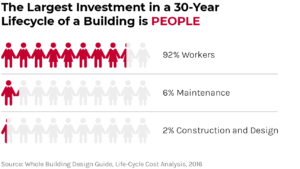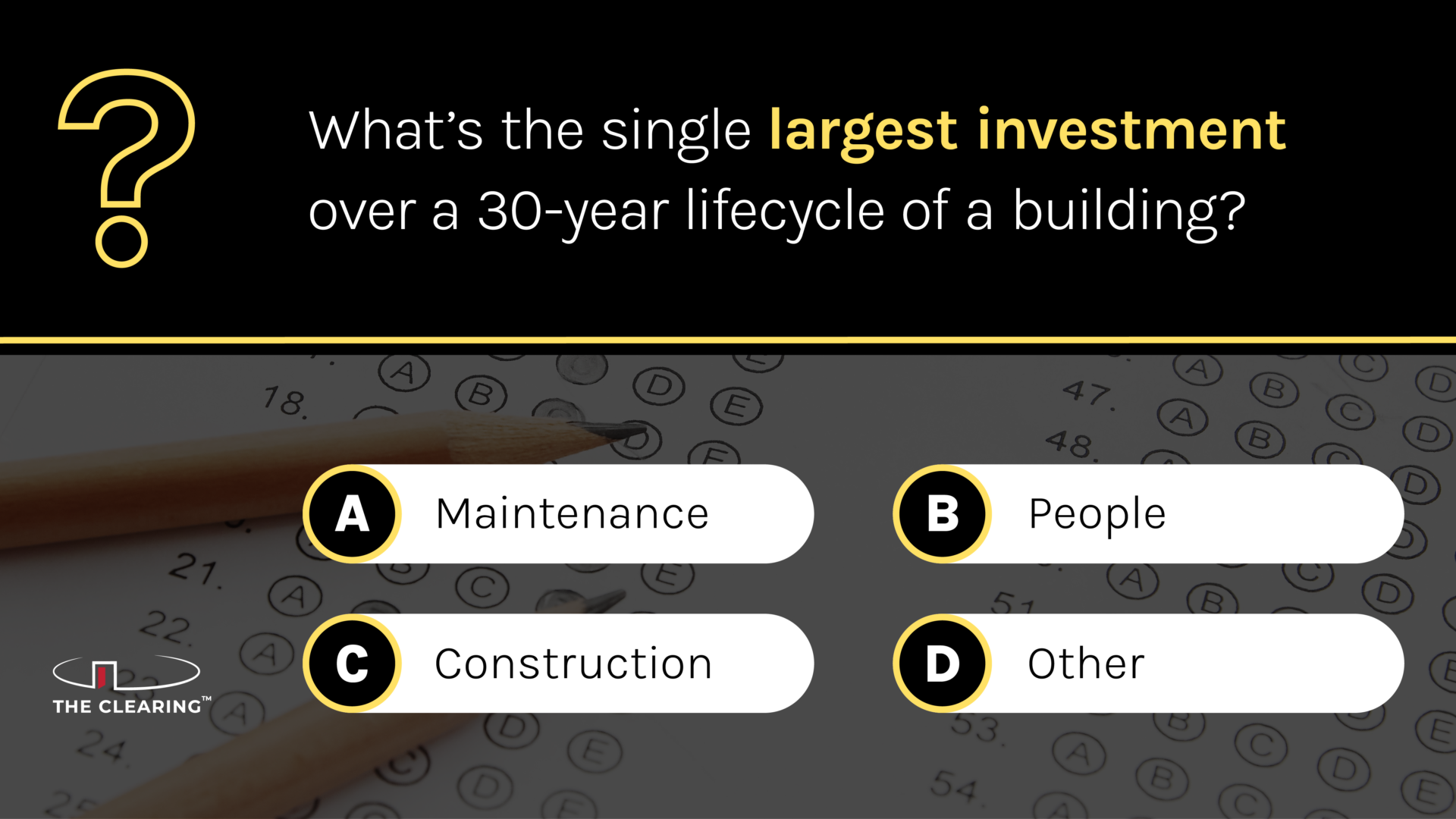Pop Quiz: What’s the single largest workplace investment over a 30-year life cycle of a building?
It’s not construction or maintenance – it’s people!
92% of total investment, in fact. And given the likelihood those people will utilize the space in different ways, it only makes sense to design around those needs, right? Easier said than done.

That’s because it’s easy for business leaders to go too far in one direction or another. You can get lost in the minutiae, trying to account for every individual team or business need. Or you can simply design for the “average user” and hope it works for your organization’s culture. I’ve seen it both ways – and experience has shown me there’s a better way.
At The Clearing, we use a tool called “personifying the workplace.” Instead of considering every individual (too many variables) or an organization as a whole (not enough customization), we create archetypes to ensure leaders get the most out of their workspaces. That means characterizing the groups of users who will use your space and designing for them.
![]()
![]()
![]()
![]()
Here are some examples of our archetypes at The Clearing:
- Business Consultants: These folks are often on-site with our clients, meaning they often don’t need permanent desks. However, when they are in the office, they need places to collaborate, strategize, or facilitate client sessions.
- Creatives: Our creative director, designers, visual consultants, etc., often require multiple monitors due to the nature of their work – meaning larger workspace requirements – and collaborative space with tools such as whiteboards. That also means it can get noisy.
- Accounting: Like our creatives, our finance team often requires multiple monitors (spreadsheets, anyone?). Unlike our creatives, their heads-down work is often a quiet pursuit.
Now, think about what we learned through a very simplified version of this archetyping exercise:
- We can afford to allot extra physical desk space for our creatives’ and accountants’ monitors because many of our consultants enjoy sharing space in a hoteling model.
- We need to put a physical buffer between the creative and accounting teams to control for noise levels (and because we all know creative accounting is dangerous).
- As a management consulting firm, our clients will be visiting our space. That means we need to ensure our workspace reflects the best practices we’re recommending to them.
As organizations look to re-enter the workplace this work will become even more critical than before – making it an exciting opportunity for leaders across industries to reimagine how their archetypes will be using space and plan accordingly.
For more, download our Personifying the Workplace one-pager here


 The Clearing’s Employee Experience
Improvement model, adapted from Itam
& Ghosh, 2020, focuses on three objectives:
The Clearing’s Employee Experience
Improvement model, adapted from Itam
& Ghosh, 2020, focuses on three objectives: 


















